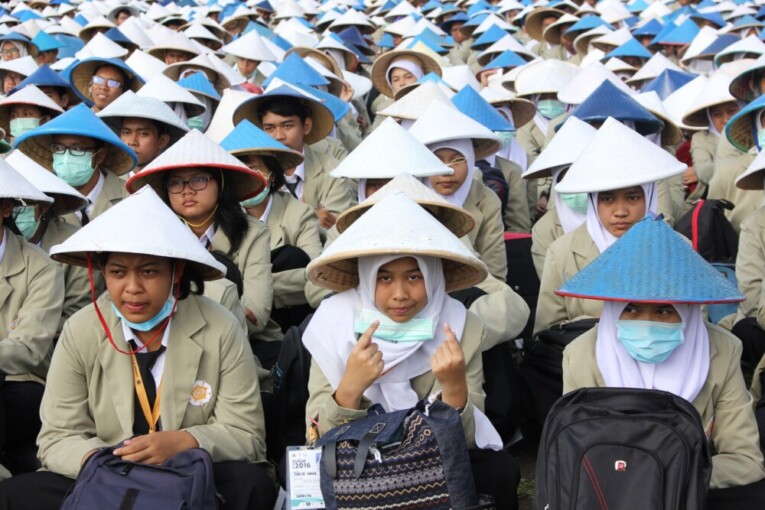
UGM is planning to return to campus this October. Discussions among the leaders of the University and Faculties are currently underway to finalize further steps and preparations. According to Dr. Hatma Suryatmojo, Head of UGM Center for Innovation and Academic Studies, in-person classes will start after the midterm exams in mid-October.
“We call it Controlled In-Person Meeting (Pertemuan Tatap Muka Terkendali/PTM Terkendali) instead of Limited In-Person Meeting to include indicators, such as health facilities, infrastructure, and others, in addition to the number,” he said at the UGM Campus, Wednesday (29/9).
He continued, the controlled in-person meeting was part of the current applicable blended learning at the University. Online lectures have been held for quite some time, and given the recent developments of COVID-19 in Yogyakarta and Indonesia, offline campus activities seem possible.
Supported by blended learning teams in each Faculty, Hatma hopes the Controlled PTM can run smoothly. He added that the teams had collected data on the necessary equipment, settings, and requirements, such as classroom layout and seating arrangements, additional cameras, streaming gear, etc.
“We hope the data is updated because there may be lecturers who need to adjust face-to-face meetings to 2 or 4 times, and so on,” he explained.
Regarding health protocols, Hatma said, students participating in the Controlled PTM must have at least gotten their first jab. They are expected to attach a consent form from their parents and submit a health statement/certificate from the nearest health center or Gadjah Mada Medical Center (GMC).
“Health statements issued by the health center are not mandatory. The important thing is that students acknowledge and state that they are in good health (to attend lectures on campus),” he said.
Hatma emphasized that classes would take no more than 60 minutes as recommended to prevent anyone from lingering in class. Each classroom will have one designated staff member to monitor student mobility in and out. Rotation will apply to lectures with a large audience, for example, 100 students with a room capacity of 50 people. In this case, students will be divided into two, half attending class and half joining the stream, and then take turns.
Furthermore, class schedules will vary. There will be no classes starting at the same time because every classroom used will have a break to avoid crowds. The campus will also provide handwashing stations, temperature checks, and alternatives to reducing the use of air conditioning.
“We will open more windows and adjust the seating distance to 2 meters. Streaming facilities equipped with operators are also available for students who cannot take offline classes,” he said.
Hatma revealed that UGM would implement the blended learning model in the future should the Controlled PTM result in efficiency and satisfaction. On this occasion, he also expressed his gratitude to Health Promotion University (HPU) for its support and supervision of the overall initiative.
“We are entering an era of new normality with blended learning that can produce efficient learning implementations. Hopefully, the upcoming PTM won’t create any clusters. Gradual upgrades will follow once the program is said to be safe. We are now trying to make the staff familiar with the service procedures during the Controlled PTM, students understand the protocol required, and lecturers prepare for hybrid learning. The program evaluation will take place later,” he said.
Author: Agung Nugroho
Photo: Firsto

